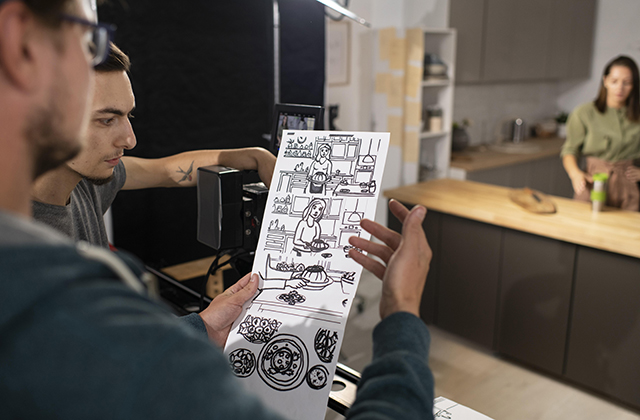Introduction: As parents, we’re always looking for creative ways to educate and engage our toddlers. One innovative and effective method is using concept boards, and who better to guide us through this than a concept board artist? In this article, we’ll explore how to educate a toddler with simple concept boards and gain insights from a talented concept board artist along the way.
- Understanding Concept Boards: Concept boards are visually engaging tools that help convey ideas, concepts, and information through images, symbols, and text. They are not only used in the creative industry but can also be a powerful educational resource for toddlers.
- Choose the Right Artist: Before you start creating concept boards for your toddler, it’s crucial to find the right concept board artist. Look for someone who specializes in creating visual content that is child-friendly, educational, and engaging. Their expertise will make a significant difference in the effectiveness of the concept boards.
- Simplify Concepts: Concept boards for toddlers should focus on simple and age-appropriate concepts. The artist can help you break down complex ideas into easily understandable visuals. For example, if you’re teaching colors, the concept board artist can create colorful images and text to reinforce the learning process.
- Foster Creativity: Concept boards aren’t just about teaching facts; they also encourage creativity and imagination. A skilled concept board artist can design boards that spark your toddler’s curiosity and encourage them to explore new ideas. These boards can serve as a springboard for discussions and creative play.
- Interactive Concept Boards: To make learning even more engaging, consider interactive concept boards. These boards may include elements that your toddler can touch, move, or manipulate, enhancing their hands-on learning experience. A concept board artist can design these boards to be both visually appealing and interactive.
- Incorporate Storytelling: Storytelling is a powerful tool for teaching toddlers. A concept board artist can create story-driven concept boards that convey lessons through narratives. This approach not only teaches specific concepts but also improves language development and comprehension skills.
- Use Visual Cues: Toddlers are highly visual learners, so it’s essential to use visual cues effectively on concept boards. The concept board artist can employ colors, shapes, and symbols that resonate with your child’s age group, making the learning process more enjoyable and memorable.
- Customization for Your Child: One of the advantages of working with a concept board artist is the ability to customize boards to suit your toddler’s unique needs and interests. Whether your child is fascinated by animals, vehicles, or nature, the artist can tailor concept boards accordingly.
- Consistency and Repetition: Consistency is key when educating toddlers. Concept boards can reinforce learning by repeating concepts in various ways. A concept board artist can create a series of boards that gradually build on previous knowledge, ensuring that your child comprehends and retains the information.
- Regular Updates: As your toddler grows and learns, their interests and abilities change. Collaborating with a concept board artist allows you to update and adapt the boards to meet your child’s evolving needs, ensuring that they stay engaged and continue to learn.
Conclusion: Educating a toddler with simple concept boards is a creative and effective way to foster early learning. Collaborating with a concept board artist can make this educational journey even more exciting and enriching. By following these tips and seeking the expertise of a concept board artist, you can provide your child with a stimulating and tailored learning experience that sets a strong foundation for their future education. Learn more the effective way for teaching toddler with concept boards.
